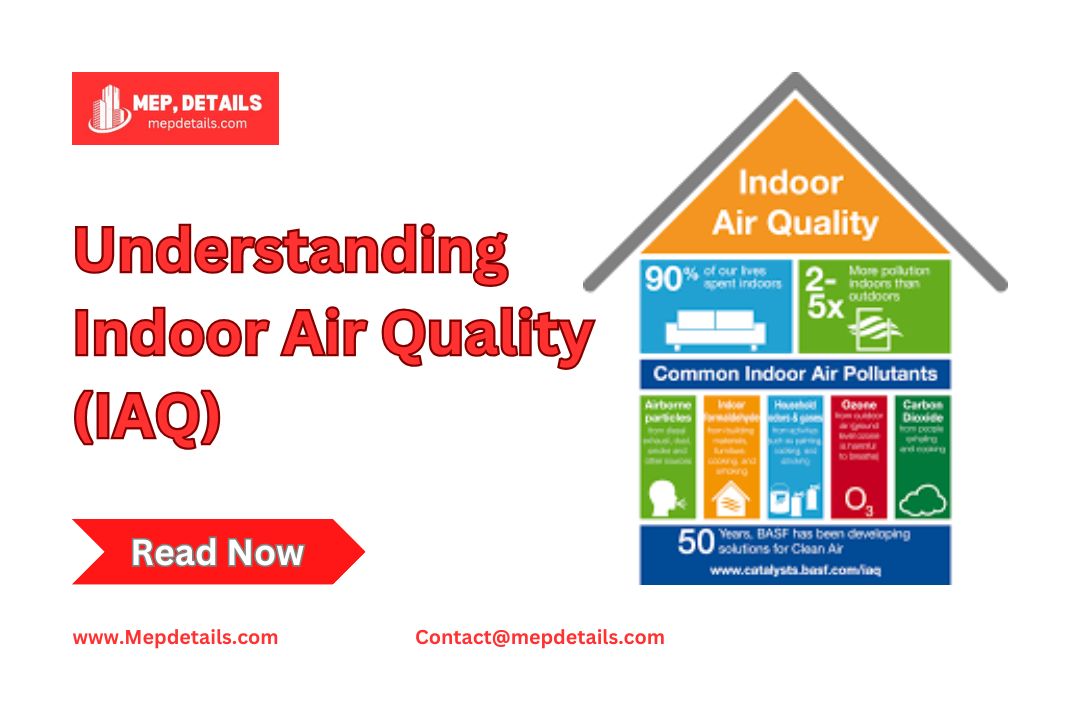Indoor Air Quality (IAQ) refers to how clean and healthy the air inside buildings is. It directly affects the comfort and health of people living or working in those spaces. Poor indoor air quality can cause various health issues, some of which show up right away, while others might appear after many years of exposure. It’s important to know what indoor pollutants are and how they can harm us.
Immediate Effects of Poor Air Quality
When you breathe in polluted indoor air, you might feel symptoms like itchy eyes, a sore throat, headaches, dizziness, or tiredness. These effects usually go away quickly once you leave the polluted area. In some cases, problems like asthma can be triggered or worsen because of poor air quality.
People who are more sensitive, such as children, the elderly, or those with existing health conditions, are more likely to experience these immediate effects. Symptoms from poor air quality can often feel like those of a cold or flu, so it might be tricky to tell if indoor air is the cause. To figure it out, pay attention to when and where your symptoms happen. If they improve when you’re away from certain rooms, poor air quality could be the issue.
Long-Term Effects of Poor Air Quality
Exposure to polluted indoor air over a long time can lead to serious health problems like respiratory diseases, heart disease, or even cancer. These problems might not show up right away, but over time, they can be harmful or even deadly. That’s why it’s smart to focus on improving your home’s air quality even if you don’t notice symptoms yet.
While scientists are still figuring out the exact levels of pollutants that cause specific problems, it’s clear that breathing in bad air for long periods can have lasting effects.
What Causes Poor Indoor Air Quality?
Many things inside your home or office can pollute the air. Some common sources include:
- Fuel-burning appliances (like gas stoves or heaters)
- Tobacco smoke
- Building materials (like old insulation, new carpets, or pressed wood furniture)
- Cleaning products, perfumes, and air fresheners
- Heating, cooling, or humidifying devices
- Excess moisture, which can cause mold
Outdoor pollution can also find its way indoors. For example, radon, pesticides, and smog can affect indoor air quality too. How dangerous these pollutants are depends on things like how much of them there are, how old the source is, and whether the appliances or materials are maintained properly. For instance, an old, poorly maintained stove can release dangerous gases like carbon monoxide.
Why Ventilation Matters
Ventilation is the process of bringing fresh air inside while pushing out stale air. If there’s not enough outdoor air entering your home, pollutants can build up and make the air quality worse. Good ventilation can help keep the air clean and comfortable.
There are different ways air enters and leaves a building:
- Infiltration happens when air leaks through cracks, windows, or doors.
- Natural ventilation is when you open windows or doors to let air in.
- Mechanical ventilation uses fans or air systems to bring in fresh air and remove polluted air.
If your house doesn’t have enough fresh air flowing in, the air quality can quickly decline, causing health and comfort issues.
How to Improve Indoor Air Quality
There are several easy ways to make the air in your home cleaner:
- Avoid burning fuels indoors, like burning candles, using gas stoves, or using a fireplace.
- Limit chemical products like air fresheners, sprays, or harsh cleaning supplies. You can choose natural or less harmful alternatives.
- Keep your home clean by vacuuming carpets and rugs regularly and wiping down surfaces with a damp cloth to remove dust and allergens.
- Use a dehumidifier to reduce moisture in the air and prevent mold growth.
- Ensure good ventilation by opening windows or using fans to bring fresh air in.
Is Indoor Air Safe?
While many indoor pollutants don’t cause immediate problems, some can lead to long-term health issues. For example, exposure to substances like asbestos or radon may not cause problems right away, but after many years, they can lead to serious diseases, including cancer. It’s crucial to be aware of the risks and take steps to improve air quality.
Final Thoughts
Improving indoor air quality is important for your health and comfort. By understanding the sources of indoor pollution and how to reduce it, you can create a safer environment for yourself and others. Keep an eye on how you feel in different rooms, and take action if you notice any symptoms that could be linked to poor air quality. Making simple changes, like cleaning regularly and improving ventilation, can make a big difference in the air you breathe indoors.
Read More – Capillary Tube Refrigeration
